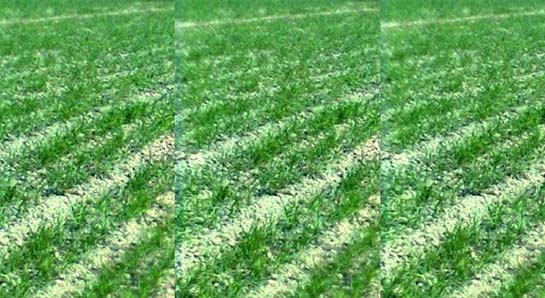RANGPUR, Nov 24, 2019 (BSS) – The farmers are expected to produce 3.61-
lakh tonnes of wheat from 97,270 hectares of land as per the target fixed by
the Department of Agricultural Extension (DAE) in Rangpur division during
this Rabi season.
Officials of the DAE said the fixed wheat farming target is higher than
that of the last season when farmers cultivated wheat on 92,445 hectares of
land and produced 3.44-lakh tonnes of the crop in all eight districts of
Rangpur division.
Meanwhile, farmers have started sowing of wheat seed after harvesting
Aman rice crop on their farm lands and the process will get further momentum
from the next week in the division.
The DAE, Bangladesh Agriculture Development Corporation, Bangladesh
Agriculture Research Institute and other agriculture-related organisations
have taken necessary steps to make the intensive wheat cultivation program
successful.
As per the fixed target, farmers will produce 71,736 tonnes of wheat from
22,050 hectares of land in five districts of Rangpur agriculture region and
2.89-lakh tonnes of wheat from 75,220 hectares of land in three districts of
Dinajpur agriculture region.
The government is distributing special incentives among small and
marginal farmers now in terms of seeds and fertilisers for inspiring them in
cultivating the less irrigation water consuming cereal crop of wheat.
The farmers have already completed sowing of wheat seed on about 5,000
hectares of land as the process will get momentum with further progress in
harvesting Aman rice crop across Rangpur division.
Talking to BSS, Deputy Director of the DAE at its regional office
Agriculturist Md. Moniruzzaman said special measures have been taken to
ensure smooth supply of quality wheat seed, latest technologies, fertilisers
and other inputs to farmers.
“We are encouraging farmers for timely sowing of the high quality,
disease resistant and stress tolerant varieties of wheat seeds using latest
technologies to promote cultivation of the profitable cereal crop having huge
demand in local markets,” Moniruzzaman added.
Agriculturist Dr. Md. Abdul Mazid, who got the Independence Medal (food
security) last year, suggested for adoption of the zero tillage or strip
tillage method in sowing wheat seed using Power Tiller Operated Seeder
Machines to increase yield at reduced costs.
“The farmers can get maximum wheat output adopting conservation
agriculture based technologies like zero tillage and using seed planters to
reduce farming costs and reduce Boro rice cultivation saving huge underground
water in the northern region,” he said.
The conservation agriculture based strip tillage method allows sowing
wheat seed in six lines at a time with narrow ploughing without disturbing
most parts of land keeping soil moisture intact for using by tender crop
plants to become healthy and vigorous.
“The strip tillage method reduces soil erosion, water requirement for
irrigation compared to full tillage wheat plots with 2-3 times of ploughing
along with saving time, fuel, money, energy and labour costs and 50 kg wheat
seed per hectare,” he added.
Besides, the strip tillage method requires less water than common
practice in ploughing land as farmers need to provide only three irrigations
at 21, 55 and 70 days after sowing seed for excellent crop condition to get
bumper wheat production.
Additional Director of the DAE for Rangpur region Agriculturist Muhammad
Ali said the DAE and other related organisations working for large-scale
adoption of the strip tillage method to reduce production cost for bringing
more profits to wheat farmers.



